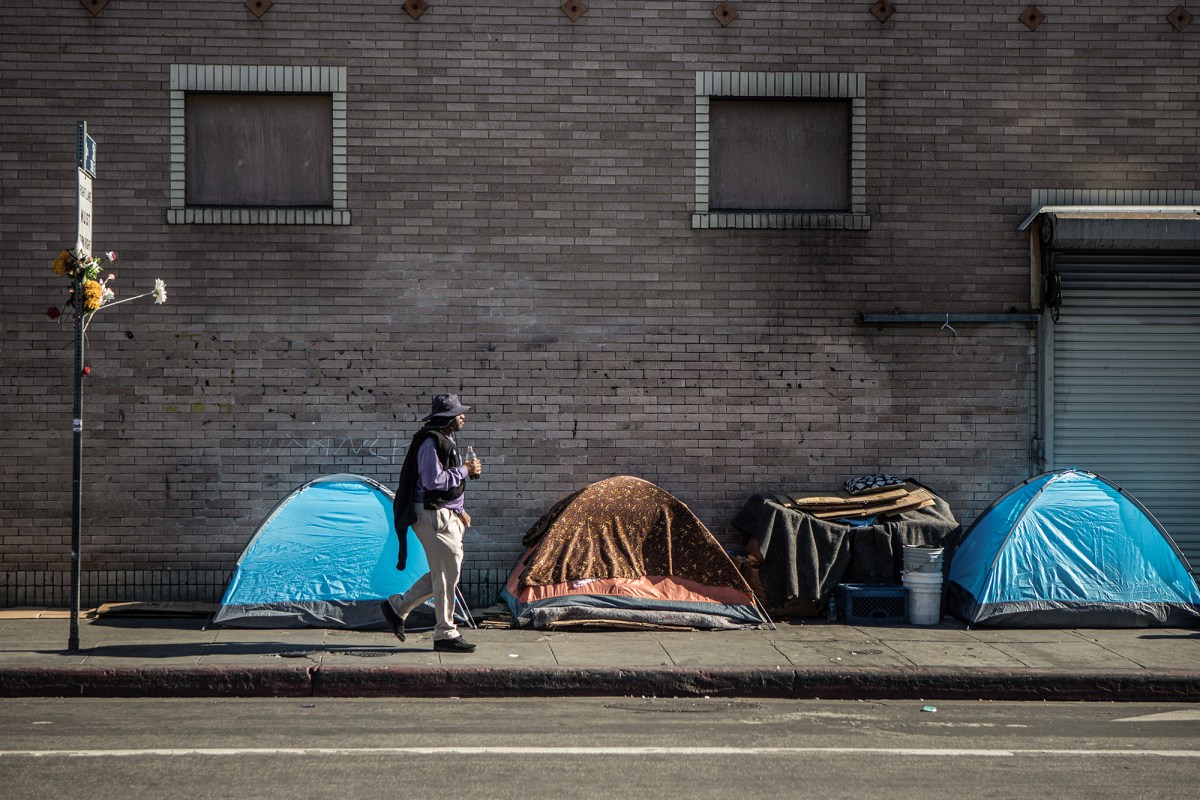Welcome to CalMatters, the only nonprofit newsroom devoted solely to covering statewide issues that affect all Californians. Sign up for
WeeklyMatters
for a Saturday morning digest of the latest news and commentary from the Golden State.
This story is part of
California Voices,
a commentary forum aiming to broaden our understanding of the state and spotlight Californians directly impacted by policy or its absence. Learn more
here
.
At its best, journalism reveals the reality that is often obscured in the superficial political rhetoric about high-profile current events.
In California, nothing outranks
homelessness
as a
burning issue
and as a political football. Officialdom, from the governor down, not only cannot agree on why the state has so many unhoused people — numerically and relatively the largest such population of any state — but what should be done to ameliorate it.
Tens of billions of dollars have been spent over the last half-decade, but the numbers often rise as state and local officials
engage in a blame game
, an implicit acknowledgement that voters might punish politicians deemed to have failed.
The Los Angeles Times recently made a valiant attempt to explain how homelessness arose and became a seemingly intractable crisis in Los Angeles County. The exhaustive report, headlined “
The real story of how L.A. became the epicenter of America’s homeless crisis
,” published last week.
“Today, homelessness feels as inevitable a part of the urban landscape as traffic jams and strip malls,” the journalists accurately observed. “Los Angeles has more people living on the streets than any other city in the United States, which almost certainly makes it the homelessness capital of the developed world.
“There are 15 counties in California whose total populations are smaller than the homeless population of L.A. County, which exceeded 75,000 people in 2023. If you filled Dodger Stadium with all the county’s homeless people, you’d have enough left over to fill Crypto.com Arena downtown.”
The newspaper’s reportage team, led by former Times staffers Mitchell Landsberg and Gale Holland, dived deeply into Southern California’s history — particularly its housing patterns. The conclusion was that the region’s bias for single-family housing, its historic enmity toward housing for low-income residents — particularly nonwhite residents — and “urban renewal” projects that upset neighborhoods and destroyed affordable housing were among the root causes.
Economic upheaval — particularly the loss of good-paying industrial jobs after the World War II boom wore off — was another factor, along with the decreasing mental health care and other social maladies.
“While mental illness, poor medical care, substance abuse, growing income inequality, job loss, racism or another social ill might have been the most visible trigger that put any one person on the street, the housing problem is why they had nowhere else to land,” the Times said, adding, “And it was decisions by policymakers, judges, law enforcement and industrial leaders that caused the shortage.”
Read Next
Why California’s biggest local effort to fight homelessness is starting all over again
All of those factors were at play in the 1970s when the last piece of the homelessness puzzle emerged as the region was beginning to see a new population boom driven largely by immigration from other countries.
“Finally, and crucially, housing prices doubled in Los Angeles from 1975 to 1979 — an extraordinary escalation driven in part by a growing population, inflation and real estate speculation,” the Times reported. “Prices would double several more times in the coming years as the average cost of a home rose from $25,000 in the early 1970s to more than $1 million today. Even adjusting for inflation, a house in Los Angeles today costs roughly six times what it did then and is no longer within reach for the average working-class Angeleno.”
So there it is, a detailed and compelling explanation of why the City of Angels exemplifies California’s homelessness problem and, implicitly, the reason why making inroads is so difficult.
If the most important factor is a lack of affordable housing, the most powerful remedy would be to build more affordable housing, but institutional, political and economic barriers remain rock-solid. California — not just Los Angeles — has been
falling behind on housing production
for many years despite state-level efforts to reduce those barriers, the latest being an
exemption from the California Environmental Quality Act
for certain kinds of high-density projects.
On Monday, Los Angeles County officials announced that the latest survey, conducted in January, found a 3,000-person (4%)
decline in homelessness
from the previous year’s 75,312.
That’s good news, certainly, but the homeless crisis remains and will persist until the housing crisis is solved.
Read More
Homeless-related arrests, citations soared in these California cities after Supreme Court case
One of the biggest obstacles to building new CA housing has now vanished
Read more from CalMatters
Text
Get breaking news on your phone.
Download
Keep up with the latest via our app.
Sign up
Receive free updates in your inbox.
Safeguard independent news for California’s future
For 10 years, CalMatters has informed millions of Californians and kept our government and special interests in check.
- We report what’s happening.
- We ask the hard questions.
- We make our government transparent to Californians.
Right now, every donation is matched dollar-for-dollar. Please make today the day you support CalMatters.
Without independent, relentless reporting, accountability slips:
- People lose visibility into decisions that shape their future.
- Misinformation and special interests gain more ground.
- Public trust erodes.
Don’t let that happen. Give today to safeguard independent and fearless CalMatters journalism.
Give today, because the news can’t wait.












With Kamala Harris out, who will emerge as frontrunner in California governor’s race?